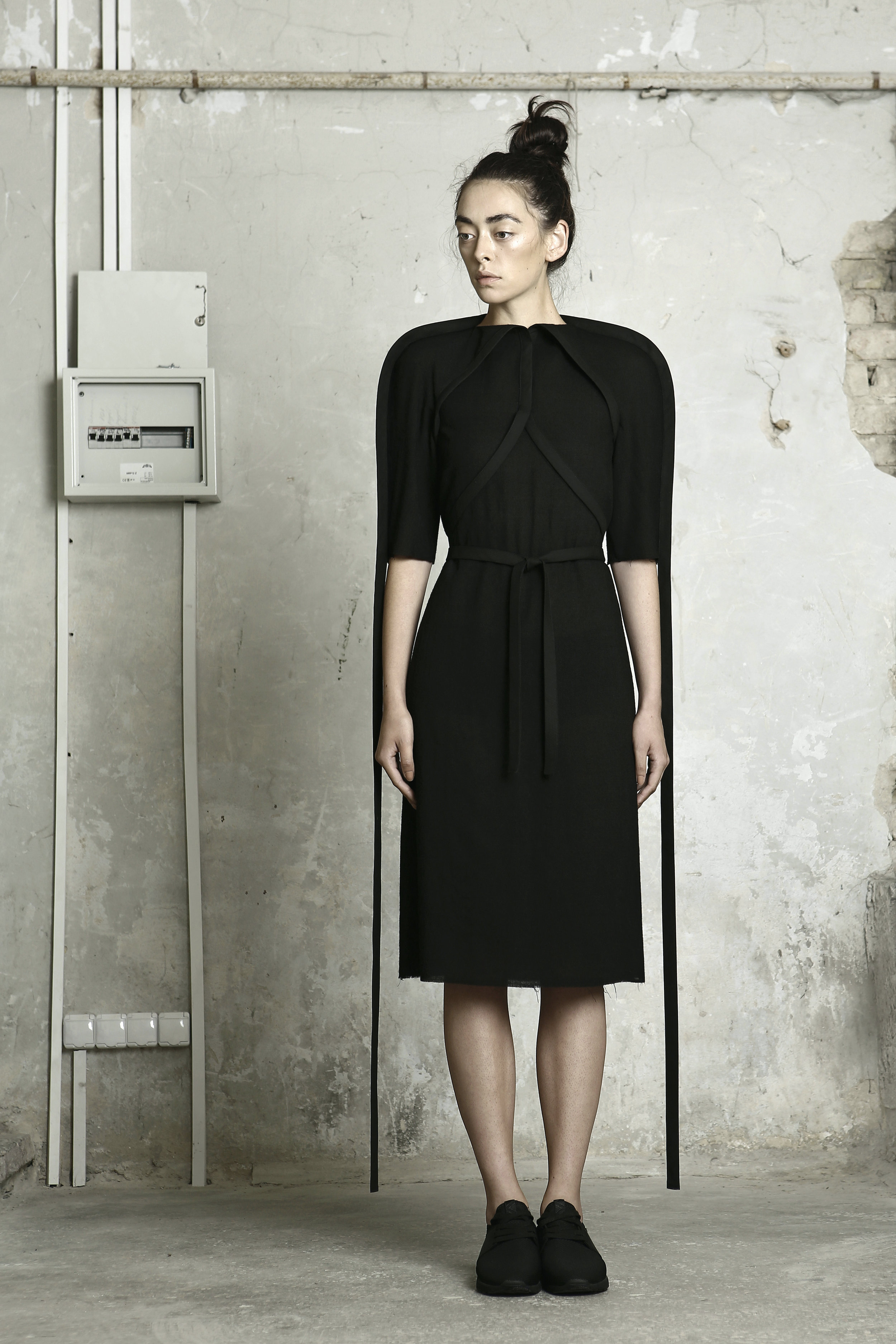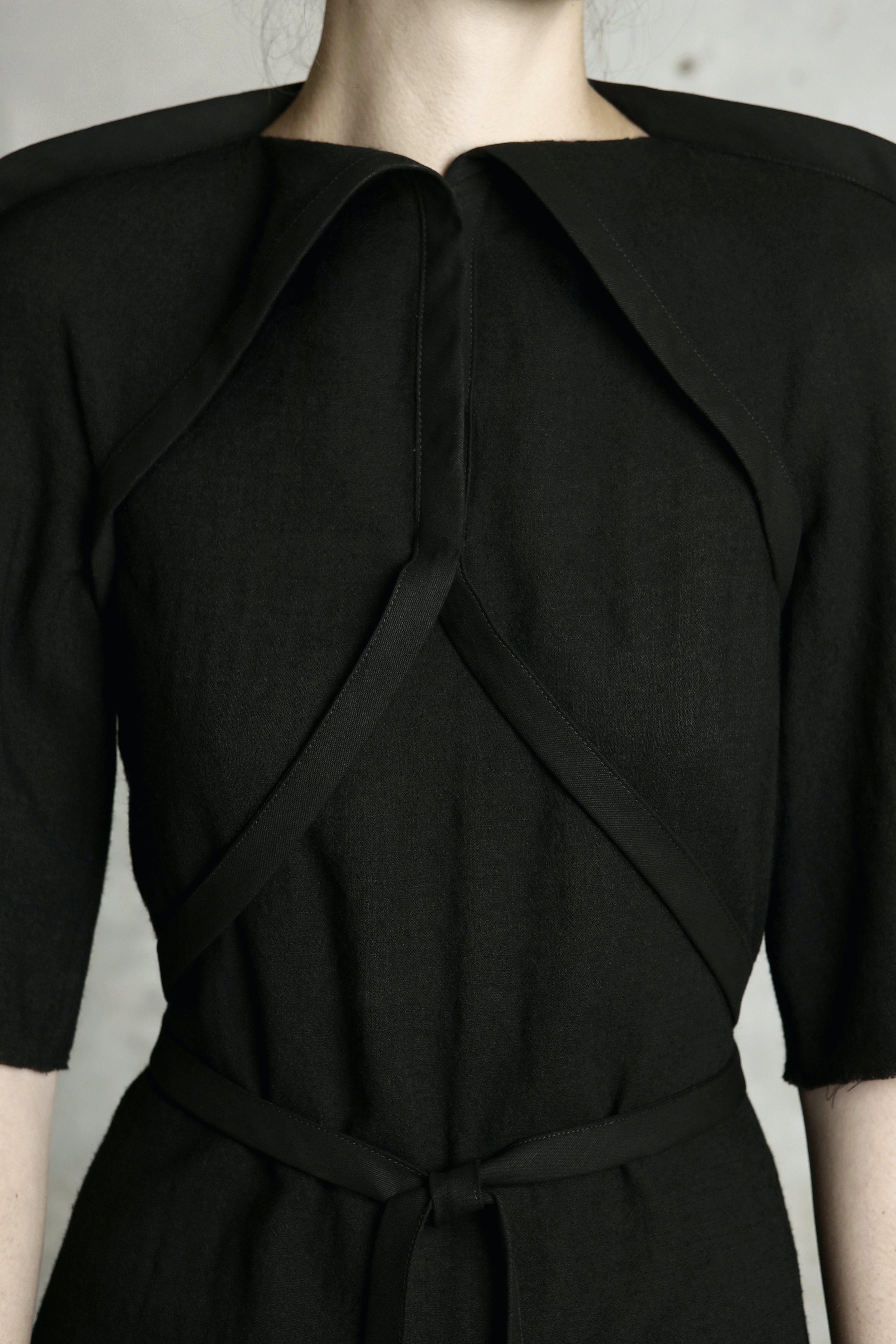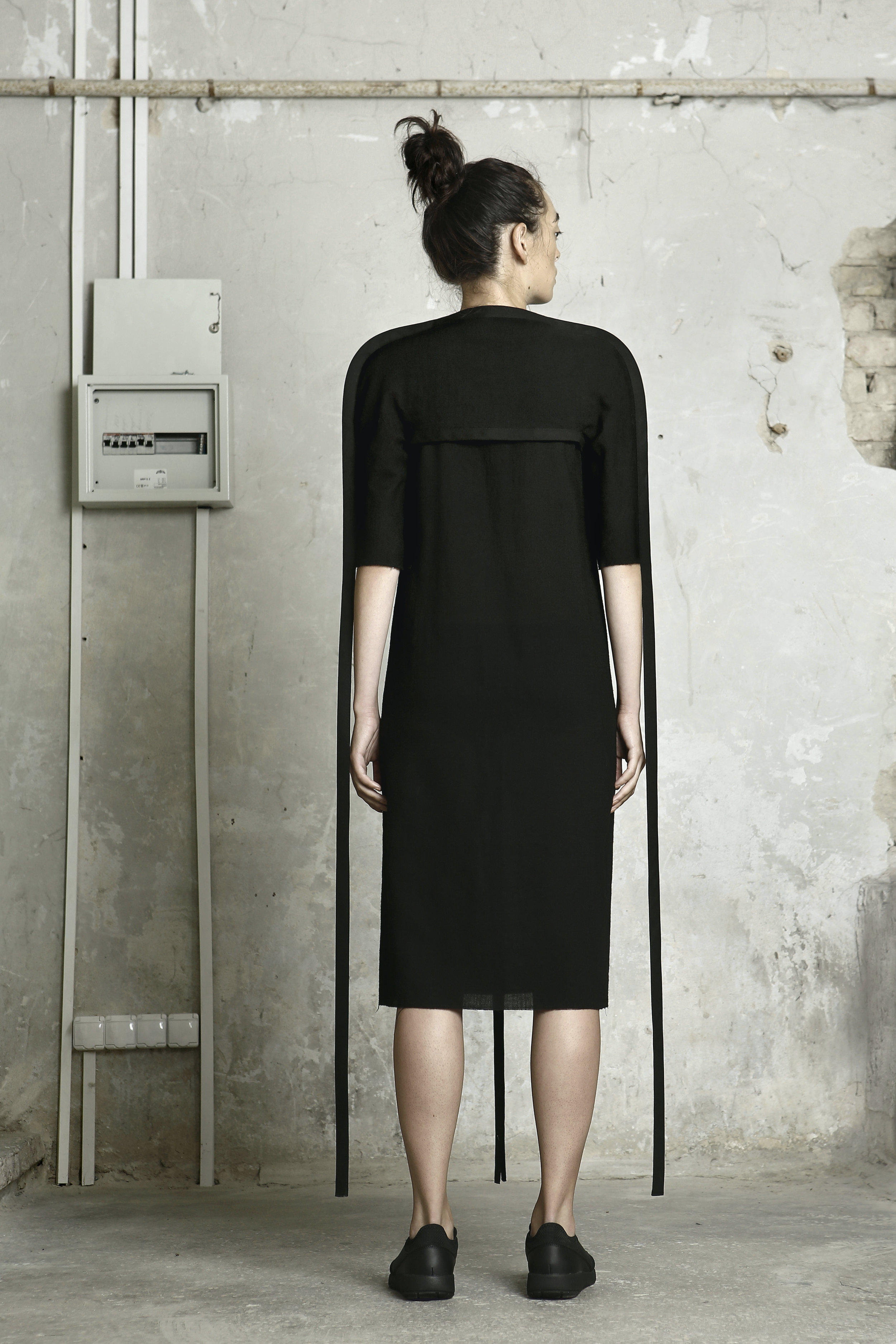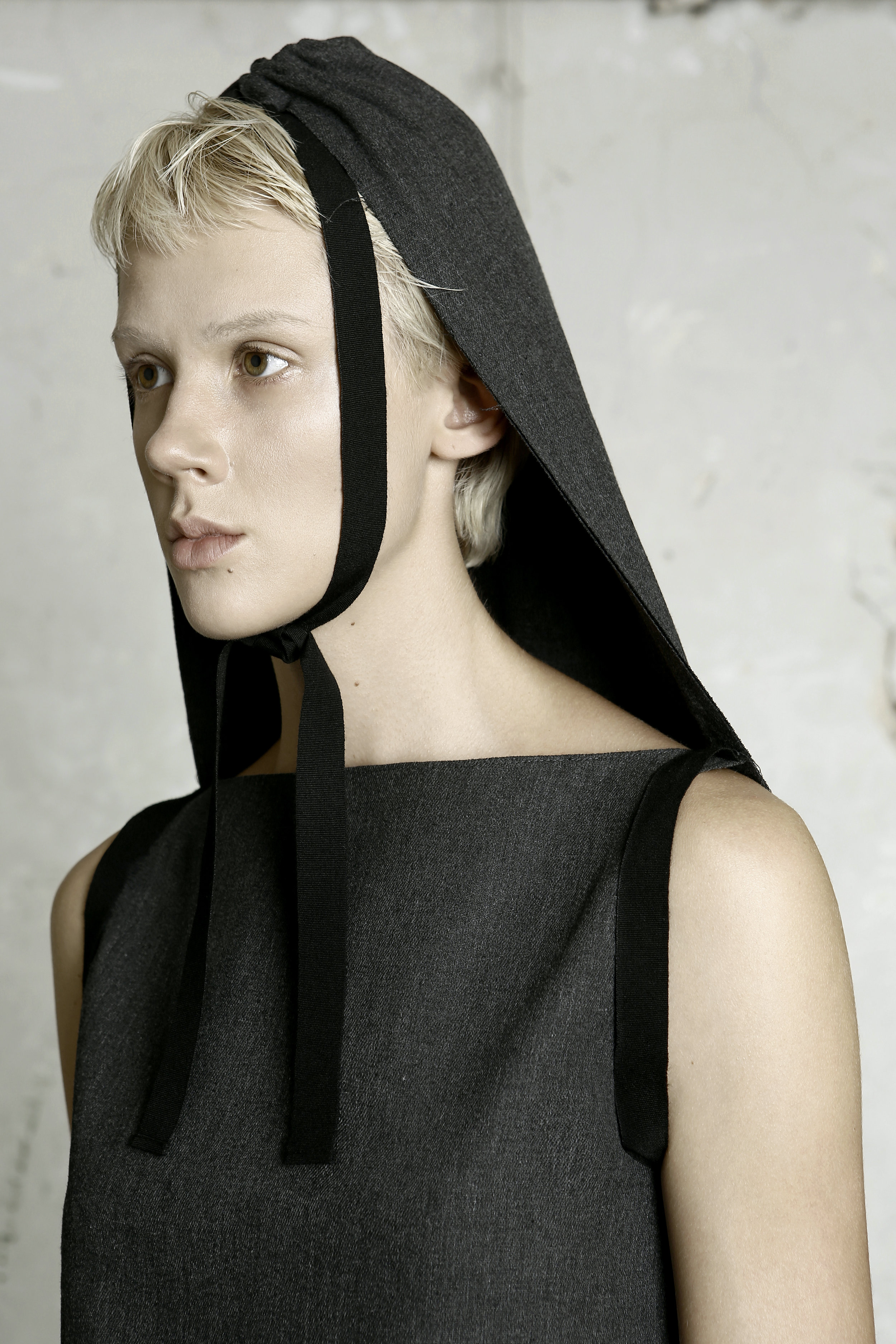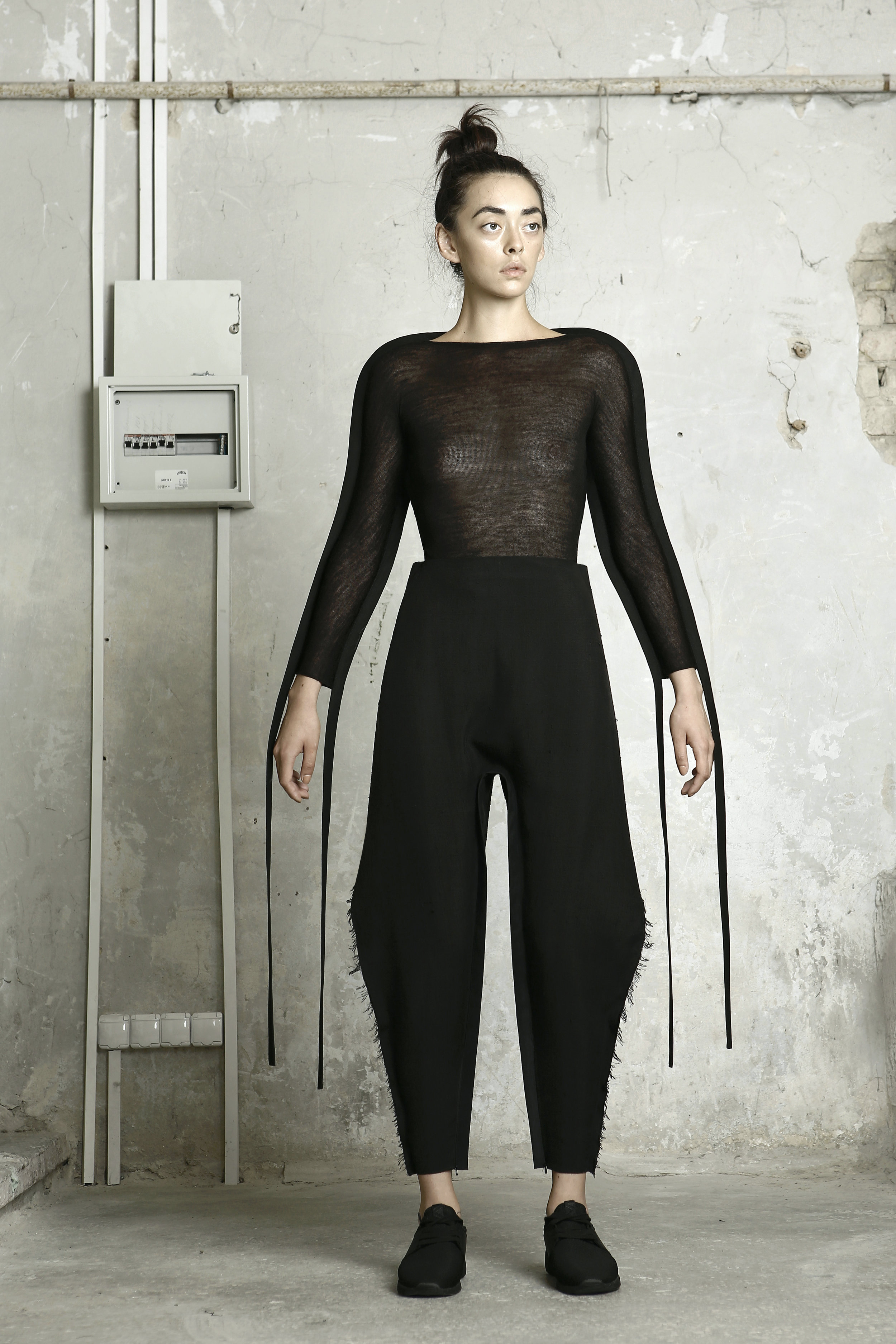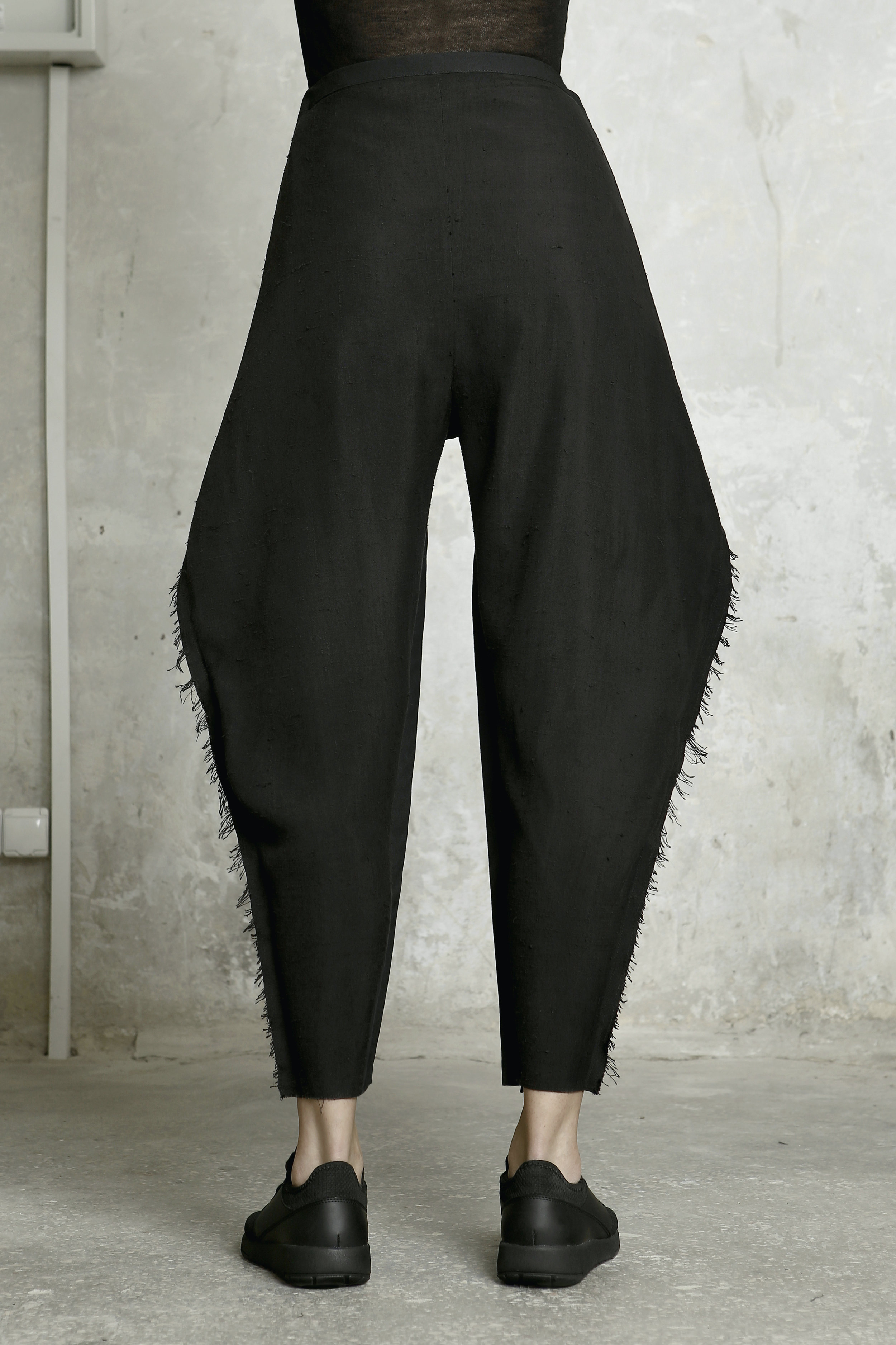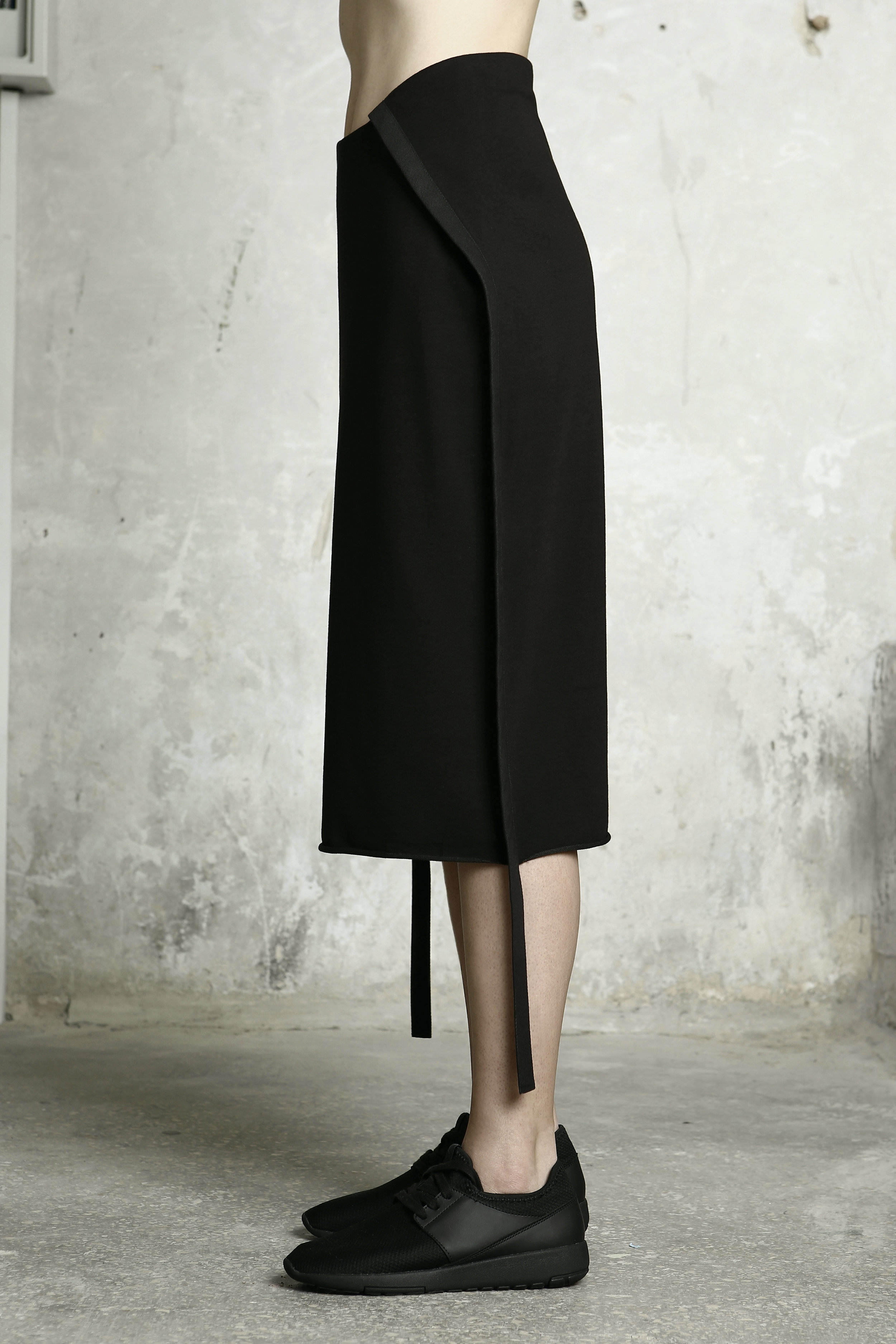Influenced by metaphyscis of the form, Ukrainian designer Irina Dzhus’s eponymous label DZHUS borrows inspiration from surrounding space’s structural solutions. For SS17, DZHUS has assembled an innovative mix of experimental constructions, utalitarian monochrome and avant-garde aesthetics, which has resulted in her latest collection, ’Carbon’. Bringing together a deep understanding of the subtle play between architectonics, voids and volumes, ’Carbon’ tells an unforgettable visual journey of completing an entire life cycle. Yet, don’t expect to take Carbon’s symbolism lightly – underneath, it sparks intrigue with representing Earth, the eternal cycle of nature and Ukrainian coal mine workers’ rigid routine.
SS17: 'Carbon'
IRINA DZHUS #Savant
What spurred the idea of your latest 'Carbon' collection presenting avant-garde aesthetics?
DZHUS SS17 line ‘Carbon’ is dedicated to the phenomenal element that forms the key component for all known life on Earth. Carbon symbolises many things - a quintessence of black, the fundamental colour of DZHUS’ identity. Carbon is coal, traditionally mined in Ukraine, the homeland of DZHUS. The workers’ rigid routine, uniform and stern industrial constructions have inspired the utilitarian leitmotif of the designs. Carbon is graphite, used to draw harsh lines and delicate shadings, which have embodied in contoured edges and sheer textures of DZHUS monochrome garments. Carbon is ashes, which will remain when we are gone, as a symbol of life’s fragility and the eternal cycle of nature.
What's your favourite silhouette from the entire collection?
My personal favourite is the Carbon Transformer Dress. Made of finest crepe, it features a unique cut: the collar interflows into the sleeves, and the front placket extends past the edge of the fastener and can be used as a belt. Because of the different silhouette options it offers, this piece fits diverse body types and suits perfectly for numerous dress codes and purposes.
Why avant-garde?
I’ve always felt like there was an objective for me to bring my innovative concepts to life - a mission, if you want. Otherwise, my designs would have remained just a fantasy, whereas they deserve to be introduced to the world and to have their own relations with people who value them. The other reason for creating avant-garde clothing is my strong belief that, in our era of oversupply and overconsumption, only truly distinctive products are worth being released, as an addition to the countless numbers of already existing goods.
"I didn't feel I had potential to create anything extraordinary based on colour, whereas space, structure and tectonics have always intrigued me and I quickly realised that was the niche for me to self-express."
DZHUS SS17 / Photos: Olga Nepravda.
What fueled the idea behind Carbon's visual identity; looking into shapes and playing with structures, rather than other creative experiments, e.g. patterns?
Since I was a child, I've had a very graphical and structural vision of the surrounding world. I painted well too, in art school. However, I didn't feel I had potential to create anything extraordinary based on colour, whereas space, structure and tectonics have always intrigued me, and I quickly realised that was the niche for me to self-express. Another crucial point is that creation of prints is not actually apparel design - it's textile design, and it has very little in common with my assignment: inventing new cut concepts.
DZHUS SS17
DZHUS SS17
You have created a vegetarian-friendly brand. What are the main fabrics you are using and where are the garments produced? Is there a specific material you like to work with the most?
As long as I create only garments, but not shoes, I mention that DZHUS is a vegetarian-friendly brand, first of all, to assure our conscious clients in advance that they will not find any leather or fur elements in our pieces. Personally, it regularly happens to me that, when I receive a garment I ordered, which seemed to be absolutely peaceful in the pictures, but there suddenly appears to be a hidden leather tie or alike. Vegetarians know well what I mean and customers always appreciate our guarantee of the products' ethical origin.
Speaking of my preferences, I mainly use natural fabrics and knits. I love cotton, linen and wool. The distinguishing feature of all fabrics I choose is their peculiar texture, often with distressed or tech finishes. Sometimes I opt for synthetic textiles, but only to create statement industrial details.
There are so many clothing brands out there trying to win a golden ticket to the market and boost their sales. How does DZHUS really stand out?
Unlike many other brands that use eye-catching branding and sophisticated marketing strategies to draw people's attention to their product, which would have remained unnoticed otherwise, we create a product that is unique itself, and the marketing and communication tools we use only accentuate that.
"Speaking of the ideological aspect, it is important for me to highlight relevant ethical issues and controversial categories in my work."
Who do you imagine as your end customer?
DZHUS' target customers are intelligent and creative personalities with an independent and conscious worldview. In search of truly outstanding pieces, with their advanced vision of conceptual fashion, our potential clients will always see the difference and choose our garments over other goods.
Besides structural solutions, what are the other main themes recurring in your fashion designs? What do you like to explore in your creative work?
Along with the innovative cut, DZHUS collections are known for their austere monochrome aesthetics and technological spirit, embodied in the industrial-inspired fabric surfaces and alternative finishes. Speaking of the ideological aspect, it is important for me to highlight relevant ethical issues and controversial categories in my work.
What are the main issues concerning the fashion industry that should be addressed in 2017?
Today’s mainstream fashion tends to be very shallow, often even grotesque, with its non-stop change of trends, which mostly seem to be artificially generated, with mass worshiping of one-day role models and tragic loss of visual and spiritual commitment and quality level. I had expected much stronger concentration of individuality and considerate choice from the 2017’s fashion world.
How to remain on top of the fashion game with using less items and consuming less? We want to hear your personal tips!
For me, there has always existed an opposite issue: I feel completely happy having coordinated 2-3 outfits per season, which fully translate my aesthetic vision. Nevertheless, working in the fashion industry demands multiple changes of looks, so I feel obliged to expand my wardrobe. In my ideal world, people would choose just several pieces that communicate their inner world as much as possible and would change their style, if they felt their self-positioning priorities have changed. This would be a much more considerate and, at the same time, sustainable way of consumption and self-expression. Minimising the wardrobe to essentials would also make it much easier to track every purchased product's origin and to afford the best quality and the most sophisticated designs.
"Today’s mainstream fashion tends to be very shallow, often even grotesque, with its non-stop change of trends, which mostly seem to be artificially generated, with mass worshiping of one-day role models."
DZHUS SS17
If you could choose only 5 clothing items to wear for an entire year, what would they be and why?
My selection would include: a minimalistic yet conceptual knit top, culottes, a statement coat, pointy-toe creepers and a square shopper bag. This outfit would either be all black, or combine black and dark grey. Actually, this description is very close to my typical outfit!
What are you absolute no-go-s, things you would never wear or even think of creating?
Obviously, as a vegetarian, I would never wear or create anything featuring cruelty products. Speaking about my personal style taboos, I don't wear colours, prints or any extravagant embellishment, neither do I use these in my designs.
Also, DZHUS will never produce garments replicating design or cut that has been presented by someone else before. People often ask me why I don’t include basic pieces, such as T-shirts, in my collections to increase sales, and I’m always explaining that a T-shirt is actually a genial design, but it already belongs to the person who invented it! Thus, copying and sharing it is a function of mass-market, whereas a designer brand is a priori supposed to come up with its own concepts.


